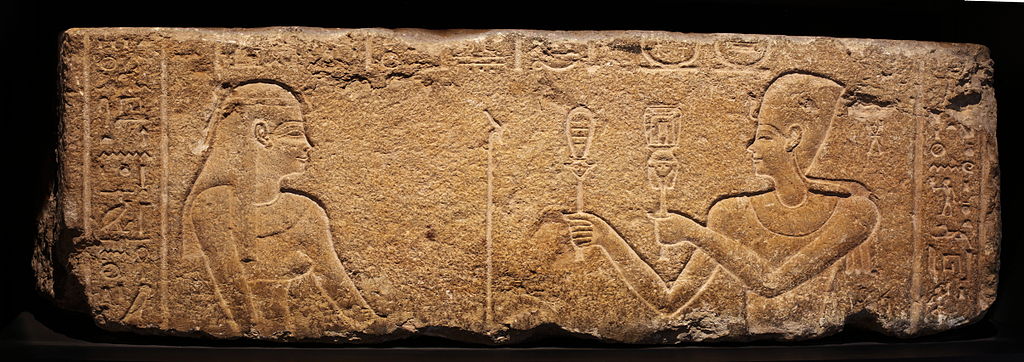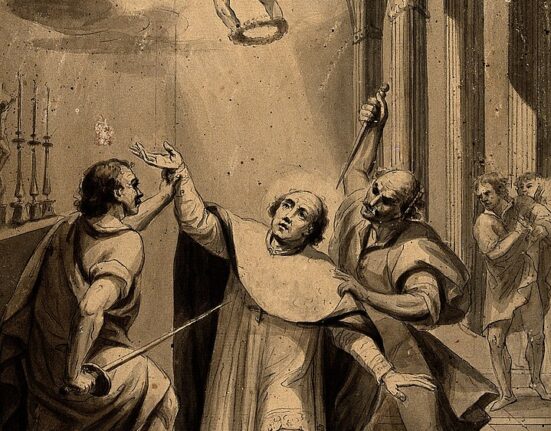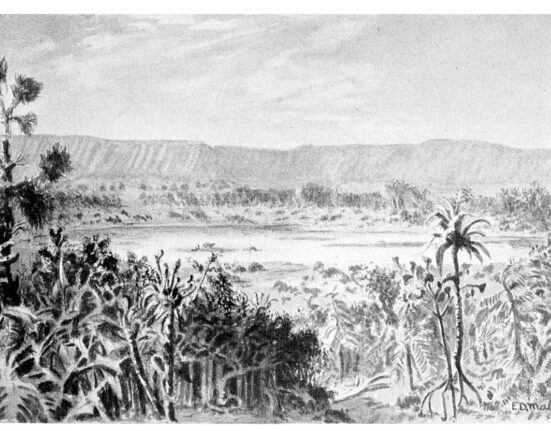Gaius Julius Caesar was a conqueror, dictator, reformist, and divisive politician whose name remains synonymous with empire and dominance. He was assassinated by a group of sixty conspirators including several men whom he considered to be steadfast allies. His death on the “Ides of March” in 44 BC has endured as one of history’s greatest moments of betrayal and drama. (1) This famous scene has been made all the more memorable by its many artistic renderings including that of William Shakespeare. (2)
Caesar’s death left a considerable vacuum in power, as he had spent his political career amassing influence over the ever-expanding Roman world. Poised to fill that vacuum was Julius Caesar’s young grand-nephew, Gaius Octavius. Gaius Octavius, often referred to as “Octavian,” who was about nineteen years old at this time, was the grandson of Caesar’s late sister Julia. Octavian, who would later take the name Augustus Caesar, had been named in Julius Caesar’s will as his adopted son and chosen heir. (3)
For a man who had lived through multiple marriages over the course of his fifty-six years, Julius Caesar had surprisingly failed to produce any male children. His sole daughter died in childbirth a decade prior to her father’s assassination. (4) Thus, Julius Caesar posthumously adopted Octavian, to ensure that his legacy would continue.
There was, however, an additional candidate for the heir to Julius Caesar’s legacy.
Who was Caesarion?
In the year 47 BC, after reinstating Cleopatra to the throne in the Alexandrian war, Julius Caesar lingered in Egypt for several months. This was a scandalous move which has fueled rumors of a torrid affair between the two monarchs for centuries. (5)
Not long after Caesar’s dalliance in Egypt, Cleopatra gave birth to her first child, a boy whom she named Ptolemy Philopator Philometor Caesar. This child would be known throughout his life as Caesarion, meaning “little Caesar.” (6)
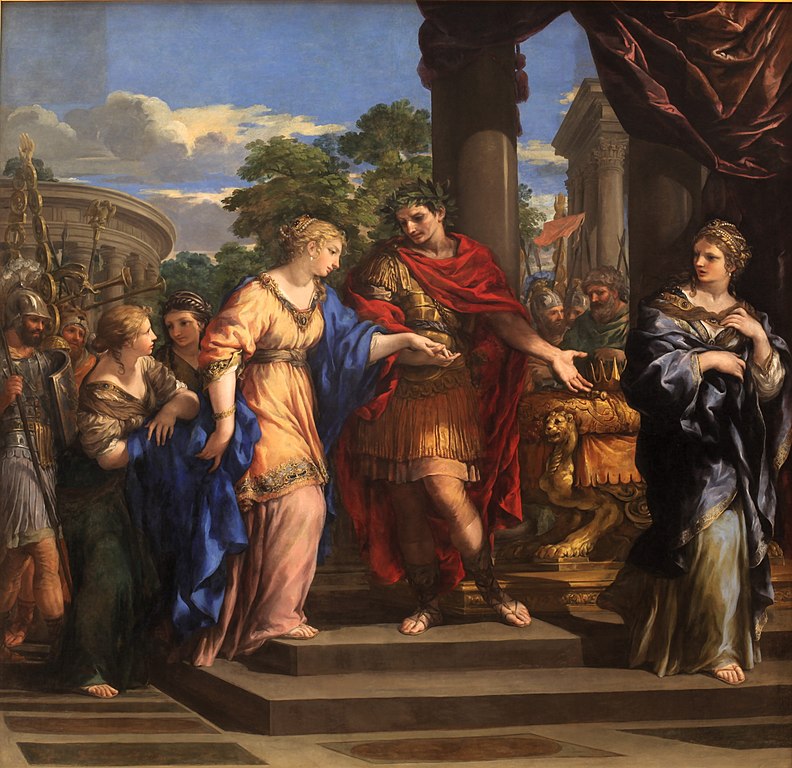
For three years, Caesarion and his mother would travel between Egypt and Caesar’s villa until Caesar’s assassination. Sources vary regarding Caesar’s acknowledgment of the child, however it seems that at the very least he allowed Cleopatra to give Caesarion his name, perhaps in a tacit endorsement of the child’s paternity.
In addition, Caesar erected a statue of Cleopatra as Venus, with little Caesarion as Venus’s child, Cupid, at a temple dedicated to Venus Genetrix, the patron deity of the Caesar family. (7)
Despite all of this, Caesar’s will implies that he never truly accepted Caesarion as an heir, instead naming Octavian as his son and successor. Caesar’s own contemporaries also seemed to argue against Cleopatra’s claim that Caesarion was Caesar’s son. Indeed, Cleopatra was and remains infamous for her cunning statecraft. It is not far-fetched to imagine that she would leverage the mystery of her child’s paternity as a political tool. (8)
Was Caesarion truly the son of Julius Caesar?
The Roman historian Suetonius, who was born decades after the assassination of Julius Caesar, wrote that some of Caesar’s acquaintances remarked that the young child resembled his supposed father in appearance and mannerisms. (9)
It is entirely possible that Caesarion was Caesar’s son, and that Caesar’s adoption of Octavian was intended to circumvent the possibility of Caesarion claiming Rome as his inheritance. If Caesarion was indeed Caesar’s son, his paternity would not likely amount to anything positive for Rome. A foreigner, and one conceived out of wedlock and controlled by a cunning political mind like Cleopatra, would have stood little chance at being accepted by the people of Rome.
How did Caesarion become pharaoh?
This did not stop Cleopatra from positioning her child, at least in Egypt, as the heir to Caesar’s legacy, if not his actual estate. Cleopatra often depicted herself as the Egyptian goddess Isis, and Caesarion as her holy son Horus. In Egyptian mythology, Isis protects Horus and nurtures him into the holy king of creation; this position belongs to Horus due to the murder of his father Osiris. Fashioning herself and her son after this myth is a fairly obvious bit of propagandizing on the part of Cleopatra. (10)
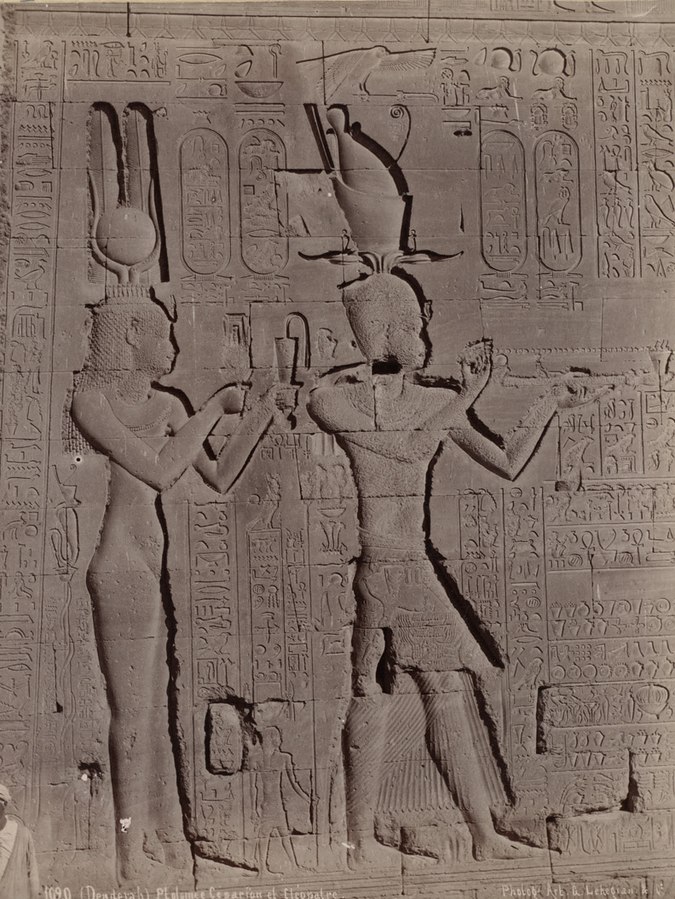
Shortly after the death of Caesar, Cleopatra returned to Egypt. In short order, her co-ruler died. This was her adolescent brother, Ptolemy XIV. Many suspect that Cleopatra engineered his death to make way for Caesarion’s rule. Although he was still a small child, Cleopatra then declared Caesarion the pharaoh and “King of Kings,” with herself as his co-ruler and “Queen of Kings.”
Over the course of the next several years, following her tryst with Marc Antony, subsequent marriage, and further three children, Cleopatra began to amass power via “donations” of land awarded to her children. Because Marc Antony held the precarious position of “triumvir,” making him one of three co-rulers of Rome alongside Octavian and one of Julius Caesar’s generals, he was able to award land to Cleopatra’s children on the behalf of Rome. This, however, destabilized his relationship with the triumvirate and eventually led to the eruption of a civil war that would result in both his and Cleopatra’s deaths. (11)
How did Caesarion Die?
In 31 BC, when Caesarion was a teenager, his mother and stepfather died via suicide as the tides of war turned against them. One can only imagine that Cleopatra had envisioned a victorious conclusion which saw her son taking up the mantle of his alleged father as the ruler of Egypt and, perhaps, the Roman world. This dream came to a screeching halt as Octavian’s forces closed in on them.
Young Caesarion was key to Cleopatra’s goals, and when it became clear that Egypt would no longer be safe for him, Cleopatra made plans to send him somewhere that might be. She arranged for her son to go away, with plenty of money to support himself, to Berenice, one of the Ptolemaic port cities that rested along the coasts of the Red Sea. The plan was for Caesarion to go into hiding in India or another region beyond Octavian’s lengthening reach. Sources vary regarding where Caesarion spent his time following Octavian’s victory. Plutarch states that Octavian made it to India, however it is unknown exactly when he left Egypt or where he ended up. (12)

Cleopatra’s plan to save her eldest son would result in a resounding failure. With promises that Caesarion could rule Egypt beneath the mantle of Roman dominance, Octavian lured the teenaged pharaoh out of hiding. He was assassinated in the year 30 BC by Octavian’s men, before ever returning to his home country.
Octavian’s decision to assassinate Caesarion lends credence to the idea that he might have been the son of Caesar. At the very least, it proves that his claim was credible enough to present itself as a potentially destabilizing threat to Octavian’s reign.
Ptolemy Philopator Philometor Caesar was seventeen when he died. He was the last pharaoh of Egypt, although he never ruled in any meaningful capacity on his own. The death of Caesarion marked the end of the Ptolemaic kingdom as well as the beginning of the period of total Roman dominance over Egypt.
The late pharaoh’s middle names, “Philopater” and “Philometor” mean “beloved of his father” and “beloved of his mother.” Evidence suggests that the latter is probably true, but the veracity of the former is a mystery lost to time.
